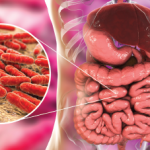Patients with systemic lupus erythematosus (SLE) are characterized by high-titer, highly specific, isotype-switched antibodies against DNA and RNA. Patients have both CD4+ T helper (Th) cell- dependent as well as Th cell-independent autoantibody production. Two mouse models of lupus demonstrate T-cell–independent autoantibody production: the pristane model of lupus, as well as in the MRL/lpr mouse model when mice express a transgenic B-cell receptor that recognizes self-IgG2a.
While investigators have long suspected that CD4+ T cells play a role in lupus, these cells have been difficult to study due to a lack of reagents for studying the cells directly. In particular, while the role of Th17 cells in autoimmune disease and response to infection has been an area of active research, very little is known about the peptide antigens recognized by the cells or their precise function in disease. A new study sheds light on the role of Th cells in autoimmune disease by revealing an antigen-specific source of interleukin-17 (IL-17) in lupus.
Nicole H. Kattah, PhD, of Stanford University School of Medicine in California, and colleagues recently published the results of their study about IL-17–secreting CD4+ T cells in lupus in the Proceedings of the National Academy of Sciences.1 The investigators identified tetramer reagents, which allow for the study of antigen-specific T cells in lupus and mixed connective tissue disease (MCTD).
The team began by identifying peptides from the known lupus autoantigen, spliceosomal protein U1-70. They selected MHC class II tetramers that met two criteria: they bound to class II MHC I-Ek, and they formed stable recombinant peptide I-Ek complexes. The investigators then generated recombinant I-Ek monomers that had a cleavable peptide that, at low pH, could be exchanged with another peptide. They used a sensitive enrichment method to positively select and analyze tetramer-stained cells.
In order to study the role of these cells in disease, they used MRL/lpr mice and divided them into predisease and disease groups. They found that the population of T cells that was specific for the U1-70 peptide was enriched in MRL/lpr mice with disease. Moreover, the presence of U1-70 (131-150):I-Ek (without phosphorylation)–specific CD4+ T cells correlated with the anti–U1-70 IgG antibodies in the serum. All of the CD4+ T cells produced IL-17A and a subset produced both IL-17A and IFNɣ, suggesting that the T cells were Th17 cells. The Th17 phenotype was confirmed by the presence of the transcription factor RORɣt by flow cytometry.
